
Recently, Mopar Connection Magazine evaluated a pair of Hedman Hedders shorty headers on Pennsylvania College of Technology’s 2006 Dodge Charger 5.7L HEMI. To continue the exhaust improvements, we contacted Mancini Racing for a MagnaFlow cat-back exhaust (part no. 15628), which would fit our Charger and similarly equipped Chrysler/Dodge products.
Above Left: MagnaFlow’s 35-plus years of experience were evaluated on a Mustang chassis dynamometer with Pennsylvania College of Technology’s 2006 5.7L HEMI Dodge Charger. Above Right: MagnaFlow’s cat-back system for the 5.7L HEMI Charger was an exact-fit 2.5” stainless steel exhaust design. The exhaust system included a left- and right-rear muffler, a center muffler, a pair of pipes to connect the center muffler to the catalytic converter extensions, and six exhaust clamps to secure the entire assembly. All the exhaust hanger provisions were welded to the pipes in the stock location.
The MagnaFlow exhaust kit included two pipes (23- and 24.5-inches in length), a 5- x 8- x 18-inch resonator, two 4- x 9- x 14-inch muffler assemblies, and six exhaust clamps. The cat-back system is a slip-fit style made of 2.5-inch stainless steel with a highly polished 4-inch tip extending from each muffler.
Before installing the cat-back exhaust pipes, we performed a series of dyno runs to establish a baseline for future comparison. The Charger, equipped with factory exhaust manifolds and a complete exhaust, was maneuvered onto the Penn College Mustang chassis dyno. After properly strapping the Charger to the dyno, we adjusted the tire air pressure, calibrated the weather station, and warmed the Hemi and drivetrain to the average operating temperature.
Above Left: The mufflers and the 4-inch exhaust tips are highly polished to set off the exhaust’s appearance. The mufflers are 4- x 9- x 14-inch mufflers that tuck in the factory position under the lower edge of the bumper cover of the Charger. The muffler hangers are located in the factory positions, so the installation and support of the exhaust are comparable to installing factory replacement parts. Above Right: Each tailpipe and muffler assembly attaches to the MagnaFlow center muffler.
We made three baseline dyno runs with a peak torque and horsepower (hp) variation of less than 1% between each run. The rpm range for all the testing was 2800-5500 rpm. The peak torque was 296.8 lb-ft at 4400 rpm, and the peak horsepower was 276.7 at 5500 rpm. The average torque was 280.0 lb-ft with an average horsepower of 223.9 hp. Satisfied with the baseline, we were ready to install the MagnaFlow exhaust products.
We placed the Charger on a vehicle lift after the baseline was established and started the removal of the factory exhaust. But unfortunately, the factory mufflers tuck up under the rear bumper cover, and the exhaust assembly cannot be removed as a one-piece unit. So, we had to first remove the driver-side muffler from the center muffler and passenger-side pipe.
Above Left: The Charger had a center muffler attached to the converter extension pipes and the tailpipes. Above Center: The factory exhaust could not be removed as an assembly. We had to remove the coupler at the center muffler and the driver-side tailpipe. Above Right: Two nuts held the driver-side tailpipe to the center muffler. After removing the supporting rubber grommets, the pipe was removed.
After disconnecting the exhaust at the driver and passenger side converter pipes, the assembly (pipes, center muffler, and passenger muffler) rested on the cross bracket in the driveshaft tunnel. Next, the passenger side muffler was freed from the bumper cover area with a twisting and pulling motion in a downward motion. Finally, with the passenger side muffler clear of the bumper, the entire assembly was moved rearward, clearing the cross bracket.
Above Left: The removal of the driver-side exhaust flange fasteners allowed the muffler to be wrestled from under the bumper cover. With the driver-side muffler removed, the exhaust clamps at the converter extensions were loosened, and the rest of the exhaust assembly was pulled from the Charger. The exhaust was awkward and heavy (75lbs). Above Right: The passenger side isolator was removed with the exhaust. The isolator from both mufflers had to be removed from the factory exhaust and transferred to the MagnaFlow exhaust. Additionally, the ground strap from the factory exhaust needed to be transferred to the new exhaust. We added the ground strap to the MagnaFlow cat-back exhaust after we installed the exhaust.
The MagnaFlow exhaust installation was straightforward; the supplied instructions explained the installation clearly. The assembly procedure started by sliding the 23-inch pipe onto the driver-side converter extension, and the 24.5-inch tube slid onto the passenger-side converter extension. Then, with a clamp placed on each tube, the center muffler assembly slid into the pipes, and the rear of the muffler assembly was hung by sliding the rubber isolators over the welded hangers.
Before the rear mufflers were installed, the rubber isolators (one from each muffler) had to be removed from the OEM cat-back exhaust and transferred to the MagnaFlow cat-back mufflers. Then, the rubber isolators were reattached to the muffler hangers and the chassis mounting point.
Above Left: We hung the center muffler with the factory rubber isolators. The 23” and 24.5” pipes had already been installed onto the converter extensions. Two clamps per pipe were left hanging on the exhaust until all the components of the MagnaFlow cat-back exhaust were installed. Above Center: The passenger side muffler was slipped under the bumper cover’s lip. Both isolators were reinstalled, and the ground strap was attached to the new pipes. Above Right: With the exhaust pipes in place, the six clamps were lightly tightened to allow the exhaust to be fitted into the final position. Once the clearance was established, the exhaust clamps were tightened to 40 ft-lbs. The exhaust was rechecked for interference, and no more adjustments were necessary, so the final torque of the exhaust clamps was 65 ft-lbs.
Afterward, the exhaust clamps were cinched down to allow the final adjustments. We maintained a 0.5-inch minimum clearance between the exhaust pipes and the chassis. The clamps were tightened to 65 ft-lbs. The installation of the cat-back exhaust took less than 1.5 hours to complete with the Charger on a vehicle lift. The time would be extended if the work was conducted with the Charger on jack stands.
Above Left: The MagnaFlow cat-back exhaust fit as well as it looked. The installation of the cat-back system was a straightforward affair. All the parts fit together perfectly, and the pipes/hangers mimic the factory cat-back assembly fit. The installation took about 1.5 hours to complete; expect a little more time if you are working on jack stands. Above Right: The MagnaFlow muffler tip cleanly fits into the bumper cover exhaust relief.
With the Charger back on the shop floor, the Hemi was started, and the exhaust pipes were checked for leaks or rattles caused by the exhaust moving around as the Hemi gently rocked in the engine bay. There were no leaks or rattles, and the check engine light remained off. The exhaust note was pleasant; it was a deep throaty but mellow tone that sounded performance oriented.
Above Left: Our seat belt anchor cross-brace appeared to have been damaged (bent), and the MagnaFlow pipes vibrated on the brace occasionally. Above Right: To fix the rattling concern, we added a few washers to lower the brace away from the exhaust pipes.
The Charger was moved to the chassis dyno for a series of runs. With everything checked, calibrated, and adjusted, the loud pedal was pounded into the carpet for a series of three runs, and the numbers were positive. The peak torque improved by 8.6 lb-ft to 305.4 lb-ft at 4400 rpm, and the peak horsepower rose 4.7 hp to 281.4 hp at 5500 rpm. The average torque increased by 7.1 lb-ft to 287.1 lb-ft, and the average horsepower rose to 229.6 hp, an improvement of 5.7 horsepower.
Besides the benefit of increased usable torque and horsepower throughout the power band, the MagnaFlow cat-back exhaust provided a deep performance sound that echoed throughout the lab when the Hemi was at full song. The note was not objectionable, and there were no drone or vibration concerns.
Above Left: To maximize the Hedman Hedders shorty headers and MagnaFlow cat-back exhaust, we employed the Penn College DiabloSport InTune tuner. It connected the InTune to the OBDII connector. Above Right: We installed the pre-programmed Diablo Tune (93-octane) with the DiabloSport InTune tuner.
To maximize the exhaust, the previously tested Hedman Hedders were slipped into place, replacing the factory exhaust manifolds. The headers were a short pipe design formerly assessed and added a maximum peak of about 6 lb-ft of torque and 4 hp and an average increase of 6 lb-ft of torque and 5 hp through the power band.
With the headers and MagnaFlow cat-back exhaust in place, the Charger was rerun on the chassis dyno with satisfactory results. The peak torque escalated to 309.9 lb-ft at 4400 rpm, up 13.1 lb-ft, and the peak horsepower improved by 5.0 hp to 281.7 hp at 5500 rpm. The average torque increase was 10.9 lb-ft to 290.9 lb-ft, and the horsepower rose to 232.3 hp, up 8.4 hp over the baseline.
Above Left: The passenger-side muffler tucks as neatly into the chassis and bumper cover as the driver-side muffler. Above Right: The MagnaFlow cat-back exhaust provided a deep exhaust note, and the exhaust had a raspy tone at full song.
To optimize the exhaust, we secured a DiabloSport InTune tuner. We uploaded the Diablo Tune (93-octane tune) from the tuner. After installing the tune, the Hemi’s peak max torque jumped to 326.0 lb-ft, up 29.2 lb-ft over the baseline. The peak horsepower was also up to 291.8 hp, a 15.1 hp improvement over the baseline. The average numbers were also up. Torque rose to 306.1 lb-ft, and the horsepower advanced to 244.4 hp. The average increase was 26.1 lb-ft of torque and 20.5 hp over the baseline.
Above Left: The MagnaFlow cat-back provided over 10 lb-ft of torque and nearly 8 hp at the rear wheels over the baseline. Above Center: Reinstalling the Hedman Hedders shorty headers added 3 lb-ft to 13 lb-ft over the baseline. Above Right: When the DiabloSport Diablo Tune was installed, the results were as much as 32 lb-ft of torque improvement and 25 hp.
Upon completion of the dyno testing, the Diablo Tune, the headers, and the cat-back exhaust were removed. The stock tune was re-flashed into the computer, and the stock manifolds and exhaust were reinstalled and reevaluated. The runs established performance numbers within 1% of the previous baseline runs. Therefore, we concluded that all the testing performed was valid.

Above: The baseline torque and horsepower are at the far left (yellow). The MagnaFlow cat-back exhaust results are highlighted in green. With the Hedman Hedders, the performance numbers are highlighted in tan, and when the DiabloSport tune was added (orange), the exhaust performance skyrocketed.
The MagnaFlow exhaust components, Hedman Hedders shorty headers, and the DiabloSport unleashed the power of the 5.7L Hemi. The cat-back exhaust was a stress-free installation, and the race-oriented growl was pleasant to the ear. To achieve our Charger’s results, check out Mancini Racing for products from MagnaFlow, Hedman Hedders, and DiabloSport.









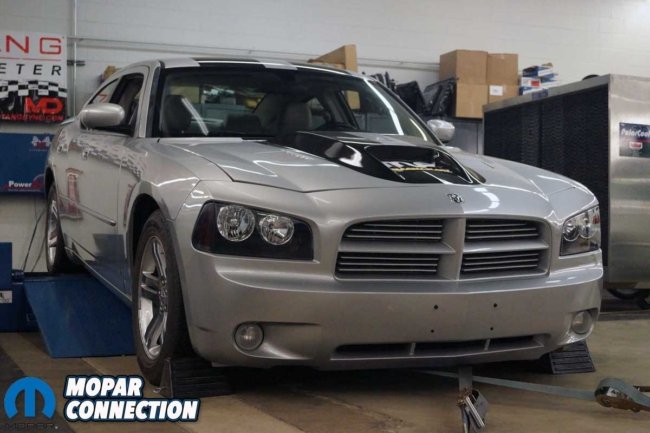
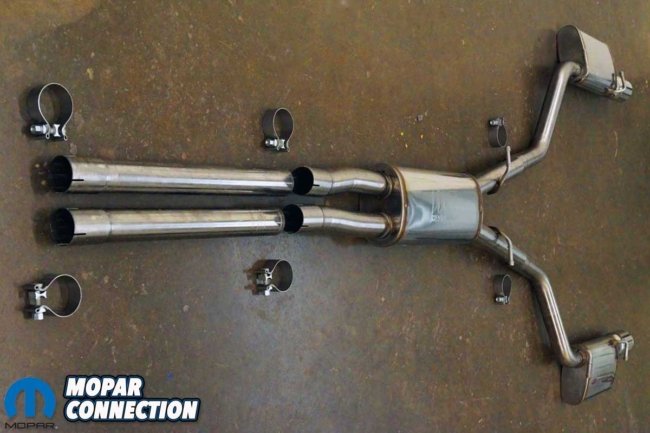

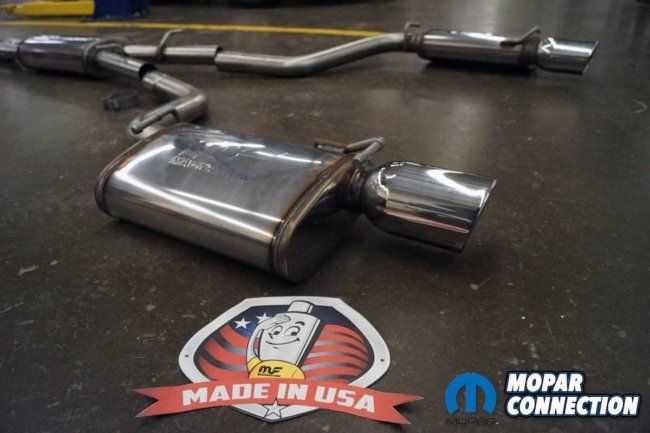

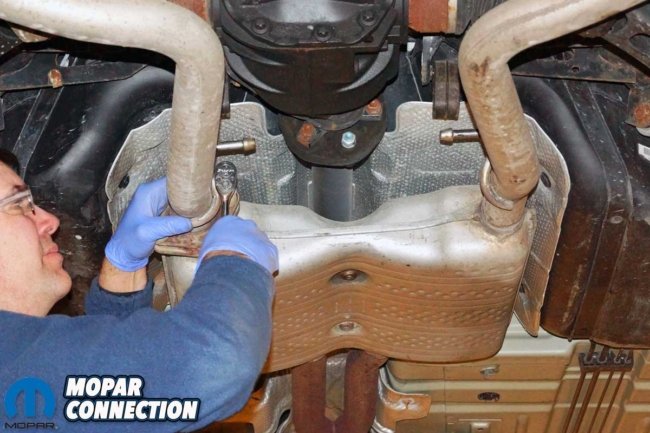




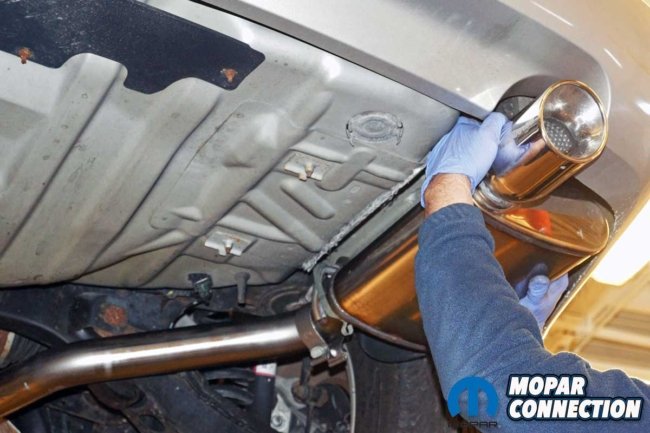
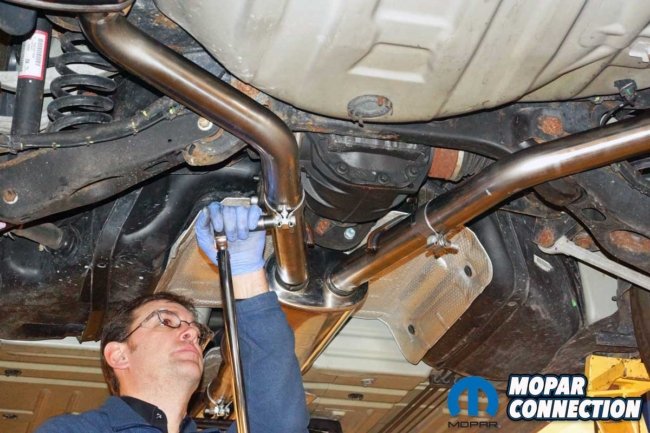





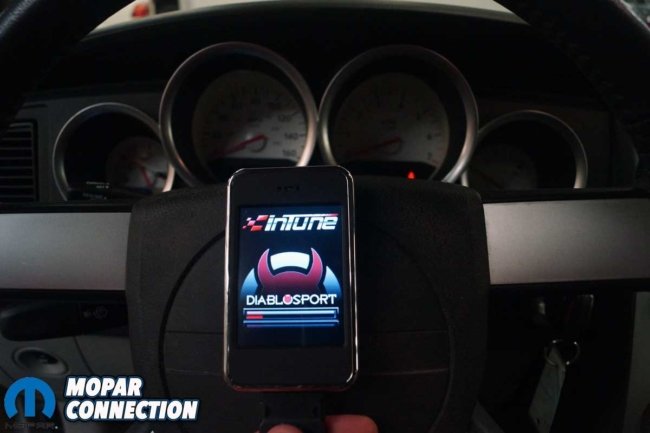









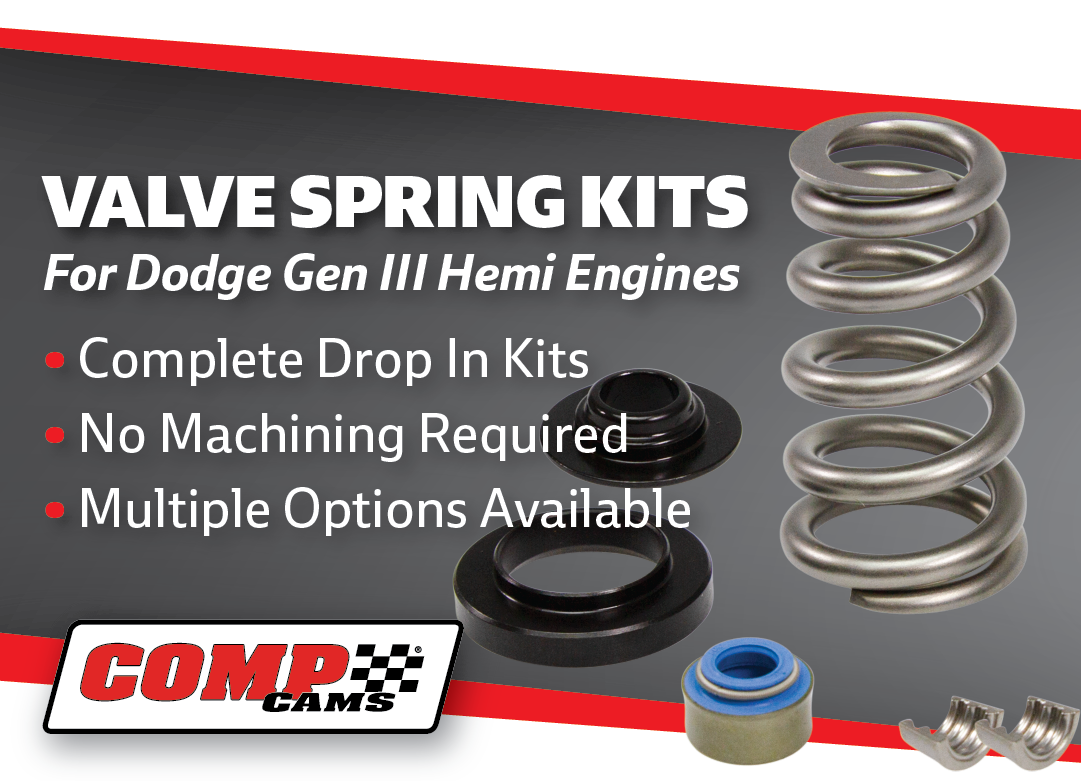
 Mopar Connection Magazine – The ONLY Daily Mopar Magazine © 2022. All Rights Reserved. Mopar Connection Magazine is the ONLY daily Mopar Magazine bringing you the latest Mopar news, technology, breaking news, and Mopar related events and articles. Find out the latest information about Mopar, Mopar products and services, stay up to date on Mopar enthusiast news, dealership information and the latest Mopar social media buzz! Sign up for the Mopar Connection Magazine newsletter for the latest information about new products, services and industry chatter. Mopar Connection Magazine is the best and only source you need to be a Mopar industry insider!
Mopar Connection Magazine – The ONLY Daily Mopar Magazine © 2022. All Rights Reserved. Mopar Connection Magazine is the ONLY daily Mopar Magazine bringing you the latest Mopar news, technology, breaking news, and Mopar related events and articles. Find out the latest information about Mopar, Mopar products and services, stay up to date on Mopar enthusiast news, dealership information and the latest Mopar social media buzz! Sign up for the Mopar Connection Magazine newsletter for the latest information about new products, services and industry chatter. Mopar Connection Magazine is the best and only source you need to be a Mopar industry insider! by
by